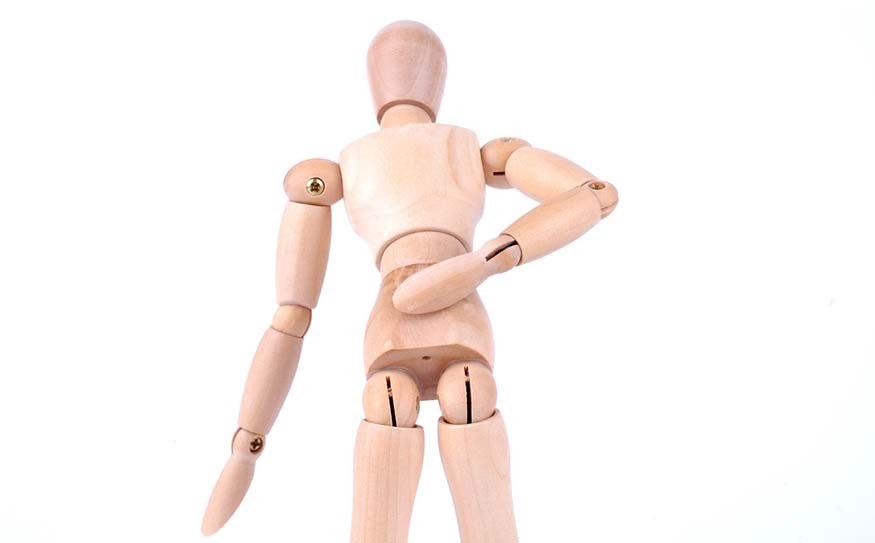A little anniversary came and went without my noticing, and now I'm proud to say that I've been standing at work for 13 months. In July 2011 I finally got off the fence and bought a box to raise my computer off my desk to standing height, an anti-fatigue mat to stand on and a bar stool so I could sit some of the time while my body got used to it.
For a long time before that I had been reading about the health benefits of standing at work, benefits like improved circulation and more calories burned, versus the serious health risks you take by sitting all day in front of a computer, regardless of how active you are before or after work. I sat for over a dozen years before I made the move, sometimes for 14 hours a day, and I felt terrible.
I'm pleased to say that I do feel a lot better now. I gained less winter weight than usual, the compressed disk in my back — once aggravated by sitting almost motionless for hours at a time — no longer bothers me, and I feel more alert and more productive as the day wears on. My posture is better. I feel slightly taller.
There were a few issues with my legs and feet aching for the first few weeks, which is when the bar stool came in handy. I started off sitting about half the time, then increased my standing periods to the point where I now stand for probably over 90 per cent of the day. Usually I'll sit to eat or if I'm tired after a jog on my lunch break, but I'm never on the stool for long. In fact, I made sure to get the most uncomfortable stool I could find to keep those sitting breaks as short as possible, and now I probably sit for less than five minutes out of every hour. Good move, I'd say.
My feet, calves and shins sometimes get tired, but I find standing in socks on my anti-fatigue mat helps a lot — and I tend to move around more when my legs get tired so I'm burning even more calories in a day.
On that note, it's also important to get a good mat. The first one I bought went flat in a few months and didn't help much. The second one, made of memory foam, feels awesome under my feet. Hours fly by before I'm even aware of them.
Still, the experience is not complete yet. My computer screen should be slightly higher (the top of your screen should line up with your eyes), and I need a bigger surface to work from — and a set-up that I can lean on. Having a box on my desk also prevents me from putting a box under my desk to put a leg up, bar-room style — one of the ergonomic, anti-fatigue features every standing worker should have.
Luckily, this is an easy fix for me. The desk that my box sits on is held up by four 2x2 legs. A trip to the lumber store to get longer legs and to build a few braces to put my desk at the right height — usually around elbow height for most people — is all I need. I can prop my computer up a little higher using boxes and boosters to get it to the right spot.
There are a lot of different ways to get a standing desk. You can buy them, even spending your money on adjustable models with motors to move them up and down. You can fudge them by putting boxes and coffee tables on your desk, or by assembling an array of different IKEA pieces into the desk you want — there's an excellent article at LifeHacker (www.lifehacker.com/5934906/standing-desks-on-the-cheap-the-ikea-guide) that shows you a few different ways to achieve this for between $140 and $250. There are also plans online to build your own standing desk using ladders, metal pipes, wood and other materials. Do a Google search for "build your own standing desk" and you'll find articles from HowToGeek, LifeHacker, Men's Health, Office Fitness, Wired and others.
Samsung vs. Apple
For all the high-tech patent lawsuits out there, it's rare to see them actually go to trial as most settle or come to some form of agreement — or the claims are thrown out in the pre-trial process. But Apple vs. Samsung, and Apple's claims that Samsung stole dozens of ideas from the iPhone/iPad, is one of those trials that is going the distance, providing a fascinating look inside both companies in the process.
Apple is alleging that Samsung stole everything from the physical design of their gadgets to the shape of the icons, while Samsung is claiming they developed similar designs independently to Apple, and were just going with the logical choice — and besides, they argue, Apple stole everything from other sources, and thereby should never have been awarded the patents they hold based on the concept of "prior art."
All of the leading financial and technology pages are following the suit, like ArsTechnica, Cnet, Forbes, etc. It's a surprisingly interesting read that could have massive implications for the future.




